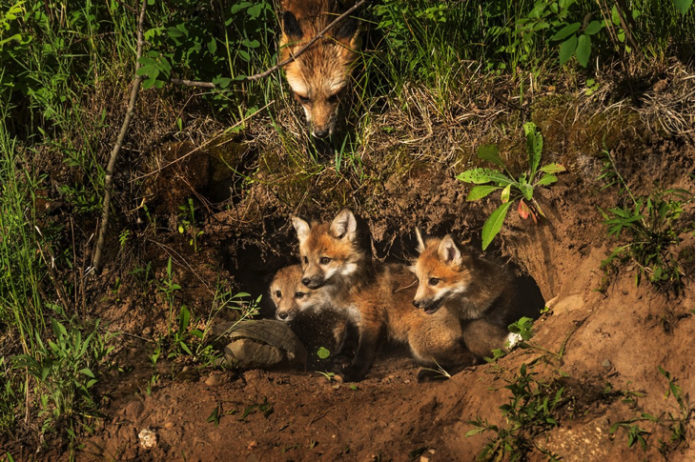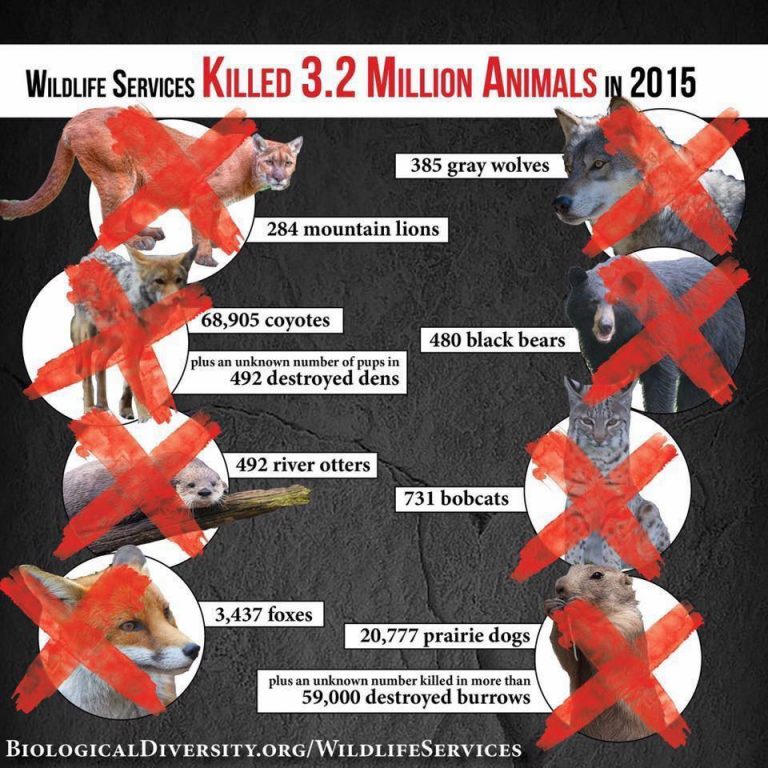
The U.S. government is showing no signs of stopping their war against wildlife, but you can help.
As of late, news of the U.S. government attempting to kill wild animals as a means of protecting commercial livestock for meat consumption has been prominent. Last week, the proposed extermination of 45,000 wild horses made headlines and it was revealed that the beef industry had a huge hand in making that decision. They asserted that wild horses were overpopulated and unhealthy, when, in fact, the current wild horse population is actually too low for genetic viability. Several weeks before that, news of a wolf pack set to be killed by Washington state after several incidents involving cattle rose to the surface, but not enough to stop the murder of the pack.

The U.S. government is showing no signs of stopping their war against wildlife, but you can help.

Wildlife Services killed 3,437 foxes in 2015. (Credit: Shutterstock)
As of late, news of the U.S. government attempting to kill wild animals as a means of protecting commercial livestock for meat consumption has been prominent. Last week, the proposed extermination of 45,000 wild horses made headlines and it was revealed that the beef industry had a huge hand in making that decision. They asserted that wild horses were overpopulated and unhealthy, when, in fact, the current wild horse population is actually too low for genetic viability. Several weeks before that, news of a wolf pack set to be killed by Washington state after several incidents involving cattle rose to the surface, but not enough to stop the murder of the pack.

Credit: Wolfwatcher
What these incidents have in common is that wild animals threatened to prevent the meat industry from making even more money in some way, either by killing some of their cattle or taking up land that could be used to expand their farms. In these instances, the government chose to side with the meat industry, since their position allows for more profits, rather than to protect wild animals.
The good news is that the New York Times recently highlighted a new investigation into predator control that exposes just how common and unjustified these killings are, and the findings are gaining attention and causing outrage.
As the war against wild animals rages on, outrage should ensue based on the startling number of animals killed at the hands of Wildlife Services: In 2015, 3.2 million wild animals were killed, which is half a million more than were killed in 2014.

Wildlife Services is a part of the U.S. Department of Agriculture (USDA), whose intentions have always been questionable at best. The methods used to kill the animals were by trapping, shooting and poisoning them, which puts family pets at risk as well.
While the organization claims that their aim is to “improve the coexistence of people and wildlife,” the interests of massive ranches and factory farms appear to always be taken into account first. Richard Conniff, who wrote the New York Times op-ed, said,
“While predators are far from the leading cause of death of livestock, they are the most visible. Killing as many of them as possible in turn can feel like a deeply gratifying solution, in a way that dealing with disease or bad weather never has been. We seem to kill predators out of mindless, even primordial antipathy, rather than for any good reason. It is how we managed by the mid-20th century to eradicate gray wolves almost completely from the lower 48 states.”

In the new investigation that’s cited in the article, the U.S. government bases its decision to slaughter an animal on 100 different reports—only 2 of which were found to actually be scientific. Another study found that killing predators to deter them from attacking livestock is ineffective; for each wolf that is killed, the odds that other wolves will prey on farm animals increases. Cattle and sheep deaths were found to bump up by 4 percent in the next year with each wolf that was killed.
Opponents of the killing practices recommend that policymakers set down the weapons until actual scientific studies can be conducted to determine the effectiveness of slaughtering wildlife. Concerned citizens can help by cutting down consumption of cheap meat and clicking here to voice their concern to Wildlife Services.
What are your thoughts on Wildlife Services? Please share, like, and comment on this article!
This article (3.2 Million Wild Animals Killed By U.S. Last Year, War On Animals Continues) is free and open source. You have permission to republish this article under a Creative Commons license with attribution to the author and TrueActivist.com




